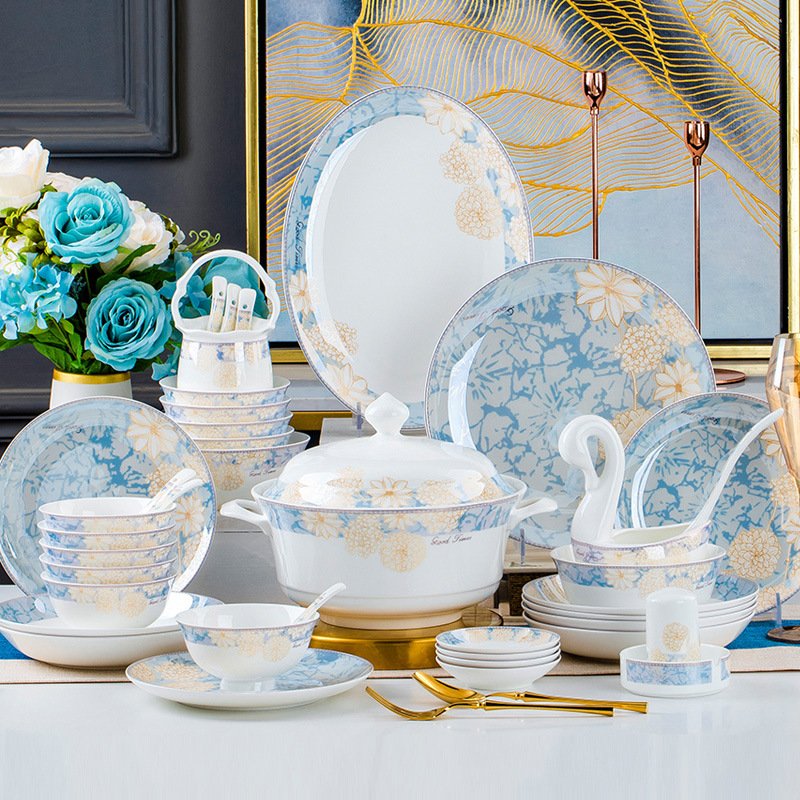I. Spatial Harmony & Functional Needs
- Pattern Density Based on Space Size
- Large spaces (e.g., living rooms, entryways): Use bold patterns like intricate blue-and-white (qinghua), famille rose (粉彩), or high-relief designs for visual impact.
- Small spaces (e.g., tea tables): Opt for monochrome glazes (单色釉) or subtle浮雕 to avoid clutter.
- Function-Driven Choices
- Tableware: Prioritize underglaze-decorated pieces (青花, iron-red 矾红) for food safety, avoiding lead/cadmium risks in overglaze techniques.
- Decorative vases: Experiment with artistic finishes like crackle glazes (仿古裂釉), Jun kiln’s kaleidoscopic “rose purple” (钧窑玫瑰紫), or mineral-tinted purple clay (紫陶).
II. Color Coordination Principles
- Background Contrast
- Dark settings (walnut wood/deep gray walls): Pair with high-brightness glazes like Longquan celadon (龙泉青瓷), sweet white glaze (甜白釉), or powder-green (粉青釉).
- Light settings (white walls/beige tiles): Use deep-toned glazes such as sapphire blue (霁蓝釉), classic purple clay (紫陶), or peacock green (孔雀绿釉).
- New Chinese-Style Palettes
- Primary colors: Black, red, walnut—embodied in glazes like raven-black (乌金釉), Lang kiln red (郎窑红), or tea-dust glaze (茶叶末釉).
- Accent colors: Matte neutrals (cement gray, off-white) to balance bold hues and complement minimalist textures (woodgrain tiles).
III. Glaze Techniques & Aesthetic Impact
- Classic Glazes
- Blue-and-white (qinghua): Seek cobalt hues with purplish undertones (Yuan/Ming dynasty style), avoiding flat modern imitations.
- Famille rose (fencai): Choose pieces with gradient layering via glass white (玻璃白) undercoating for lifelike flora/fauna.
- Innovative Finishes
- Kiln-transmuted glazes (窑变釉): Embrace serendipitous effects like Jun kiln’s crabapple red (海棠红) or starry night釉 (星空釉).
- Matte textures: Ideal for minimalist spaces—try rock-inspired rough glazes or muted plant-ash釉 (草木灰釉).
IV. Modern Reinterpretation of Patterns
- Simplified Traditional Motifs
- Redesign dragon or lotus scroll patterns into geometric forms (e.g., cloud motifs as wavy lines).
- Use kaiguang tongjing (开光通景) to frame landscape vignettes on modern shapes like hexagonal vases.
- Material Hybridization
- Bamboo-weave釉面: Carve clay to mimic bamboo textures, paired with celadon glazes.
- Metal inlays: Add copper wire accents to blue-and-white rims for refined contrast.
V. Pitfall Avoidance Guide
- Over-Decoration Risks
- Avoid clashing color combos (e.g., red-green) or excessive decals; prioritize subtlety.
- For overglaze-decorated pieces (釉上彩), verify铅镉 migration test reports.
- Lighting Considerations
- Test glaze translucency in natural light (e.g., jade-like celadon should glow when backlit).
- Avoid high-gloss釉面 (e.g.,亮光钧釉) under spotlights to prevent glare.
Golden Rule: Blend 70% tradition + 30% innovation. Example: pair a sapphire-blue jilan glaze vase (霁蓝釉象耳尊) with minimalist shapes for entryways, or use matte purple-clay teaware (哑光紫陶竹节壶) with ergonomic upgrades for tea ceremonies.
